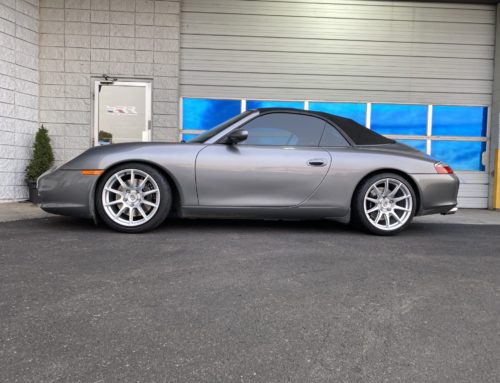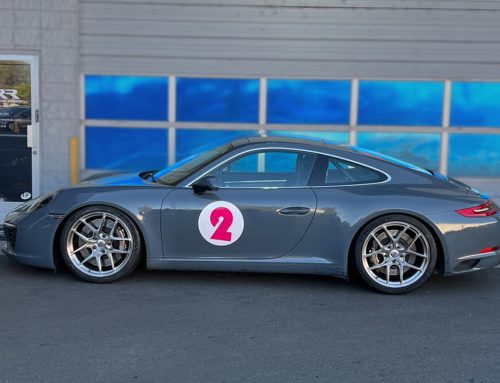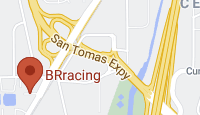
We’re in the midst of a major shift / change in the automotive world. For the last 100 years or so, we have been marching down the path of the internal combustion engine (ICE), and refining it along the way. Now, due to the changes in technology, battery development, we are seeing the shift to Battery Electric Vehicles (BEV). The leader in this shift, for the most part, has been Tesla. As Tesla has refined their electric car model line, batteries, and charging network, it’s only natural that we would see the advent of customers taking their electric cars to the track.
They offer some real advantages….great acceleration, re-gen braking, lower center of gravity. However, they were not meant to be track ready. Even with the advent of Tesla’s Model 3 Performance variant, they are still not track ready (and, we have tested both a Model S (too heavy, poor battery life, too long to recharge)), the prior Model 3 (non Performance version), and now the Model 3 Performance model). The Model 3 Performance version gives us a platform that we believe can be made track suitable.
We aren’t doing anything to the batteries, the electronic motors, or the charging network. But, the other standard areas of track suitable upgrades lies in wait. Brakes, suspension, tires, safety. After testing and driving the various Tesla models on the track, we know indeed that it could benefit from these upgrades. Stay tuned here, as this will be a long term project, and will have more features / upgrades added in the future.
SUSPENSION
Just about everything here needs to be upgraded, made adjustable. The shocks, the springs, the mounts, the bushings, the adjust-ability in the alignment (toe links, camber arms).

For shocks, we needed better dampening (better valving), and the ability to adjust or tune the suspension to create the handling characteristics we need to fix. We needed to be able to lower the ride height. We needed stiffer springs. All that spells a set of dual adjustable coil-overs.
Aftermarket suspension is something that can make or break the enjoyment of a vehicle. Unfortunately for Model 3 owners, the car is very high from the factory and runs into the bump stops over just about any bump – and they are always engaged once a car has been lowered on springs (we have tried this, this was the first easy suspension change, and while it did provide some benefits, there were too many downsides. Therefore, we needed a more complete solution). This means that the shock absorbers must be changed when lowering the car to allow for a compliant chassis over bumps, and to avoid damaging the vehicle when driving aggressively – as the bump rubber can only compress so much before effectively becoming a rock / solid. Repeated extreme impacts can damage the top mounts and put unnecessary shock through the entire vehicle, and upset the platform when driving at the limit.
Enter a set of KW v3, dual adjustable shocks and upgraded springs. This set is custom designed for the Tesla 3. The upside here to the custom development, is that the actual shock travel has been increased from stock. Many times, when you install sport springs or coil-overs, you will actually get a shorter shock travel, which can allow the shock to bottom out, the ride to become very rough, harsh.

For most suspension systems, when you lower the car, the alignment is going to get altered significantly. Normally, as the car is lowered, you gain in negative camber. However, that does not mean you got camber where you wanted it. Therefore, as part of the solution, we need some means to adjust the camber and toe, most likely, beyond what the stock suspension allows. Track conditions can also induce additional forces on the suspension arms, so, in upgrading the suspension adjustment, if we can gain some strength there too, that would be desired.
Here then are the first pieces in the suspension upgrades: KW V3 dual adjustable shocks (front and rear), new custom front strut mounts, KW V3 sport springs, adjustable rear camber arms, and adjustable rear toe links.

Pay close attention to the adjustable camber arms and toe links. Generally, in the aftermarket world, many of the product manufacturers take the easy road, but not necessarily the proper road. An example, is that many aftermarket adjustable control arms / toe links use “jam” nuts. This makes for easy adjustment, and easy manufacture. But, “jam” nuts don’t stand up to use and stress. Pinch bolts do. These Tesla 3 camber and toe links use “Pinch” type bolts. But, they went one step farther. Instead of just making a reverse thread adjustment link, they made a fine and course adjustment link. This makes for dialing in the precise alignment targets possible.

Obviously, once we had all the suspension pieces installed, the ride height set, we implemented a full proper, track oriented alignment. The results of the suspension upgrades are quite stunning. The car actually rides better even for normal daily driving, but now is completely composed on the track. It lets you drive deep, drive hard, confidence inspiring.
TRACTION CONTROL / TRACK MODE
One of the advantages of the electric car is that the power of the electric motor can be used in many ways, more than just powering the car or moving it forward or backwards. As noted in the braking section below, the engine can also be used for slowing the car. Take that a step farther, and the electric motor can be used in “torque vectoring” mode, or to make the car rotate in one direction or another, and to do that at a very quick rate.
Understanding this, Tesla in late 2018 introduced “track mode” as a software upgrade (obviously, done over the air). Here is what they introduced with “track mode”.
- Motor Torque for Rotation – Tesla’s Vehicle Dynamics Controller constantly monitors the state of the vehicle and all of the inputs from the driver to determine the driver’s intention and affect the rotation of the car in a matter of milliseconds. Track Mode relies heavily on the front and rear motors to control the car’s rotation, and they have the ability to command a 100% torque bias. When cornering, if rotation is insufficient to the driver’s request, the system commands a rear biased torque. Conversely, when rotation is excessive, they command a front biased torque.
- Increased Regenerative Braking – Heavy regenerative braking may not be comfortable for day-to-day driving, but on a track, it has several key advantages. It gives the driver more authority with a single pedal, improves the endurance of the braking system, and sends more energy back into the battery, maximizing the battery’s ability to deliver large amounts of power. It also gives the Vehicle Dynamics Controller more authority to create or arrest rotation with the motors when the drivers foot is lifted off of the accelerator pedal.
- Track Focused Powertrain Cooling – The high output power required for track driving generates a lot of heat, so endurance on the track requires more aggressive cooling of the powertrain. They proactively drop the temperatures of the battery and the drive units in preparation for the track and continue to cool them down in between drive sessions. They can also allow operation of the powertrain beyond typical thermal limits and increase their refrigerant system capacity by overclocking the AC compressor into higher speed ranges.
- Enhanced Cornering Power – We typically think of using brakes to slow down a car, but you can actually use them to make the car faster out of a corner. All Model 3s are equipped with open differentials, which send an equal amount of torque from the motors to both the left and right wheels. When cornering, the wheels on the inside of the corner have less load on them, which means they can provide less tractive force than the outside wheels. To prevent excess slip on this inside tire, they have to limit the torque for both wheels, leaving power on the table. In Track Mode, they simultaneously apply brake and motor torque to produce a net increase in tractive force while cornering. This is similar to how an electronic limited slip differential works, except when using the brakes, the differential can be optimized for various driving conditions.
BRAKES
One of the great advantages of the BEV electric cars is they can take advantage of “re-gen” braking. Or, use reverse polarity of the electric motor, which then acts like a brake (and which can be finely tuned), while also then producing voltage output that can charge the batteries. But, they still have mechanical / friction brakes for aggressive, panic braking on the street.
Therefore, the BEV cars brakes are not designed to take repeated abuse, nor be able to achieve the braking output that is needed when driving on the track. Some Tesla’s brakes are lasting over 300k miles on the street….because the friction brakes never get used. However, the experience on the track is quite different, and the Tesla will even produce warnings letting you know that the brakes are being abused and are over heating.
Therefore, we need to address the normal brake upgrade elements: stainless steel brake lines, brake fluid, better rotors, and pads.
Here is a pic of the stock, front brake setup.

What is a little surprising about the stock performance brakes is the weight. Normally, BEV cars try to eliminate as much weight as possible, less rotational mass. Hence, your electric car is more efficient. These are the Tesla Model 3 performance brakes, and they are certainly bigger…but not optimized. The stock performance rotors are heavy, and poor at cooling. Enter a set of GiroDisc true 2-piece floating rotors, front and rear. We know about the success we have had on just about every other car brand there is w GiroDisc, and the fact that we can get them, and have them weigh less (about 2# less per rotor) is just gravy. You can go beyond this too…as Brembo now makes a traditional “Big Brake Kit” for the Tesla…but we have not found this a necessary upgrade if you have the Tesla Performance brakes installed.


Next piece up…the brake lines. Not meant to take repeated track abuse, upgrading the brake lines is both a safety issue as well as a feel and consistency element.

TIRES
The stock tires on the Tesla 3 Performance are: 235/35/20.
There are a lot of options to choose from and you can go much larger in width as well. However, going much above the 235 width will exceed what the stock wheel can support. There are aftermarket wheels for the Tesla, and the standard tire once you upgrade your wheels seems to be the 265/35/20. Of those, as most of our readers will recognize, the preferred tire for track use is the Bridgestone RE-71R.
At a recent track day, there was another Tesla 3 running 300 width, full slick, Michelin’s. So, you can go bigger, no question.
If you really wanted to get carried away, then weight optimization would be a good step. Surprisingly, the Tesla has a heavy, stock, normal battery in the front trunk area. There are light weight battery options out there already…but, we have not taken that step…..yet.

But, wait…there’s more. We are on the early edge of development for electric cars, and this project will continue to be updated and evolve. Stay tuned, more to come.
BRracing – leading the development for driver joy





Leave A Comment
You must be logged in to post a comment.